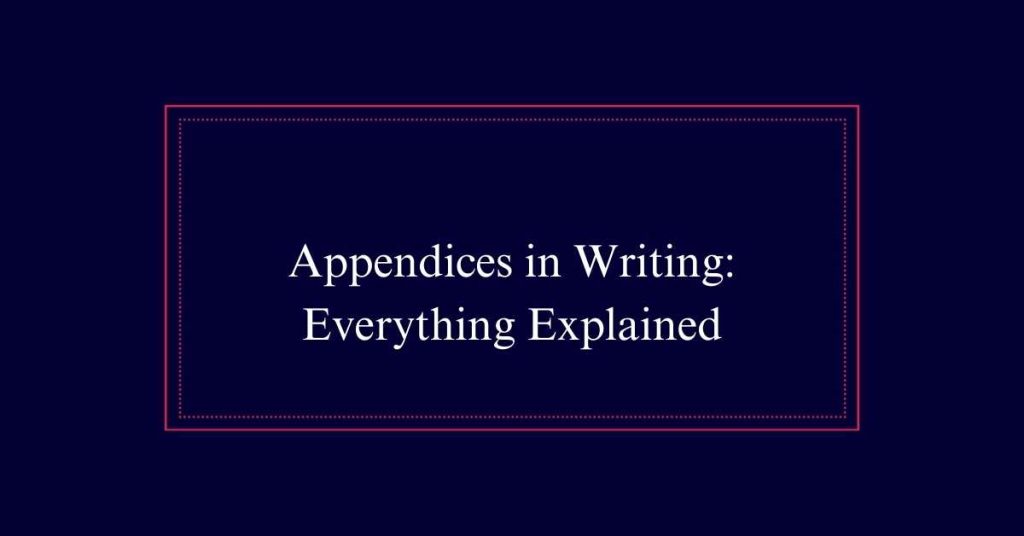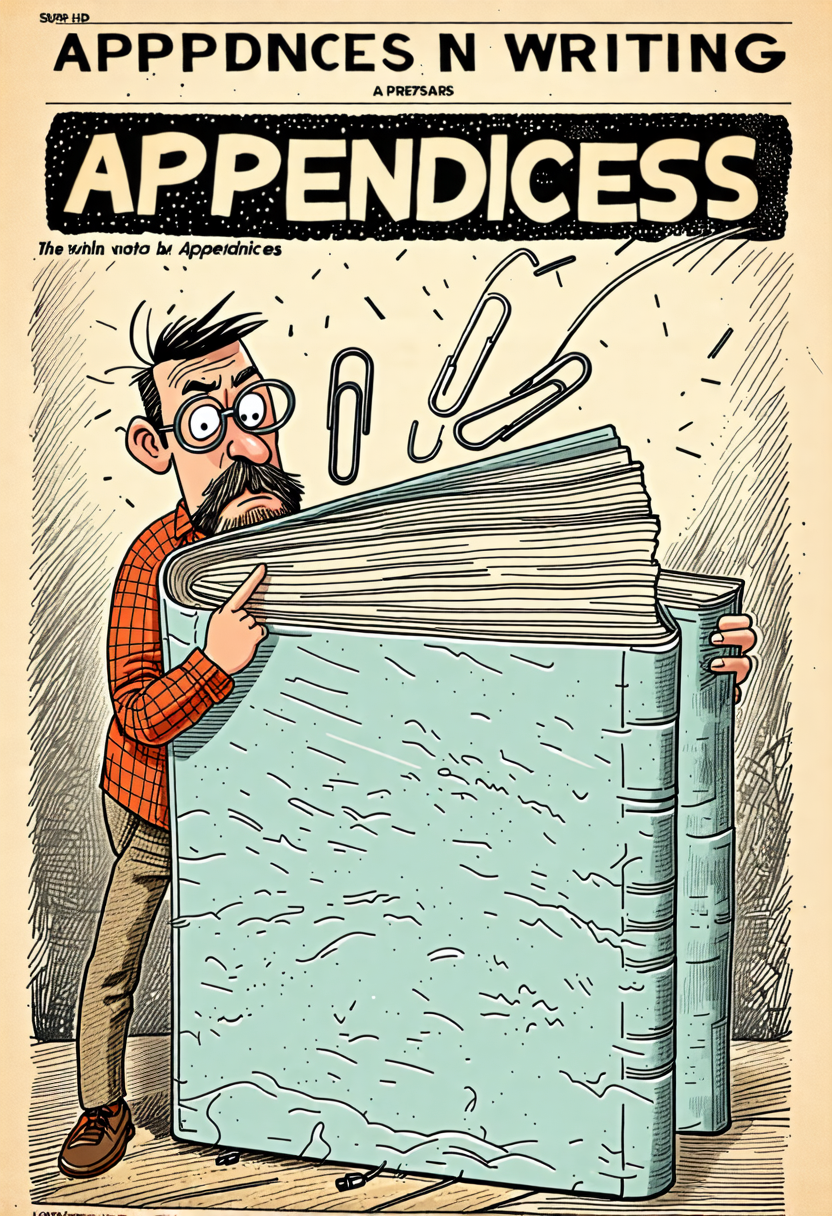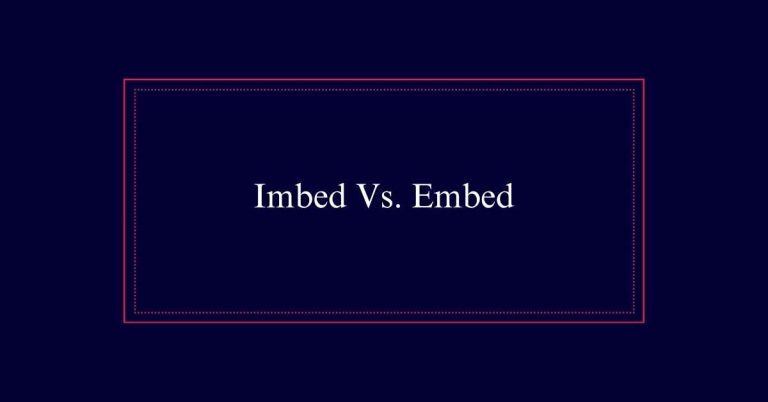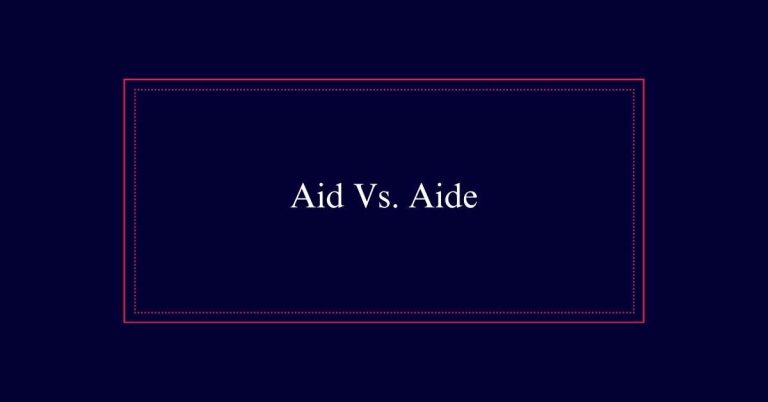Appendices in Writing: Everything Explained
Appendices in academic writing serve as sections that provide nonessential yet supplementary material to support the main text. They may include maps, images, data sets, and detailed calculations. Each appendix should start on a new page, be clearly labeled, and have a descriptive title.
Common uses include presenting raw data, visual aids, or other detailed information that would otherwise disrupt the flow of the main text. By organizing this supplementary material effectively, appendices enhance the understanding of the paper.
Definition of Appendices
Appendices are sections at the end of an academic paper that contain nonessential information relevant to the main text. This information is not essential for understanding the main arguments. Instead, it supplements the primary content.
For instance, appendices can include maps, images, or extensive data sets. These sections maintain the focus of the main text while still providing additional resources for interested readers.
Multiple appendices can be included, each labeled sequentially, such as Appendix A, Appendix B, and so on. This approach allows for a clean and organized presentation.
Purpose of Appendices
In academic writing, the primary purpose of appendices is to provide supplemental information that supports the main text without interrupting its flow. Appendices allow writers to include relevant materials that are too detailed for the main body. This guarantees the core argument remains clear and concise while still offering readers additional insights.
| Reason | Benefit | Impact |
|---|---|---|
| Avoids Disruption | Keeps main text clear | Enhances readability |
| Supports Arguments | Provides evidence | Strengthens claims |
| Includes Extra Details | Offers deeper insight | Enriches understanding |
Content for Appendices
Various types of content can be included in appendices to enrich the main text. Appendices are ideal for supplementary information that supports the main arguments but is not essential for understanding them. They can contain raw data, detailed calculations, questionnaires, and transcripts of interviews.

Graphs, charts, and tables that are too extensive for the main body are also suitable for appendices. Including such material guarantees the main text remains concise and focused. Appendices can also feature additional literature reviews, sample materials, or extended examples that provide deeper insight. However, it is important to make sure the content is relevant and adds value.
Types of Materials
When considering the types of materials to include in appendices, it’s important to focus on content that enhances understanding without overcrowding the main text. Appendices can contain various supporting materials such as raw data, detailed calculations, and additional statistical analyses.
Visual aids like charts, graphs, and maps can provide clarity and depth to the text. Supplementary documents, such as questionnaires, interview transcripts, and extensive literature reviews, can also be included.
Technical details, such as algorithms or computer code, are often relegated to appendices to avoid disrupting the main narrative
Structuring Appendices
Properly structuring appendices is essential for maintaining clarity and organization in academic writing. Each appendix should start on a new page and be labeled sequentially, such as Appendix A, Appendix B, and so on. These labels should be prominent and consistent.
Each appendix must have a clear and distinct title that describes its content. This helps readers quickly understand what information is contained within each appendix. Keeping appendices well-organized guarantees that supplemental information is easily accessible without disrupting the main narrative.
This structure supports the seamless integration of additional data, maps, or images, enhancing the overall quality of the document without overwhelming the reader.
Formatting Guidelines
Adhering to specific formatting guidelines is vital for ensuring appendices are both professional and effective. Formatting standards vary depending on the style guide used, such as APA, MLA, or Chicago. Consistency is key. Start each appendix on a new page, label them sequentially, and provide a clear title. Use the same font and size as the main text to maintain uniformity. Below is a summary of essential formatting elements:
| Element | Description |
|---|---|
| Sequential labeling | Label as Appendix A, B, C, etc. |
| New page | Begin each appendix on a separate page |
| Title | Provide a distinct title for each appendix |
| Font and size | Match the main text’s font and size |
| Consistency | Maintain consistent formatting throughout |
Placement in Papers
The placement of appendices in a paper is crucial for maintaining a logical and organized structure. According to APA guidelines, appendices should be included after the reference list. This placement guarantees that the main text remains uninterrupted, providing a seamless reading experience.
Appendices should always be the last sections of a paper. This helps readers easily locate additional information without searching through the document. While some debate exists on the ideal placement, it is generally agreed that appendices at the end are most effective.
Always confirm specific placement requirements with your teacher or supervisor to adhere to institutional preferences.
Common Uses
Commonly, appendices are used to provide supplemental information that enhances the reader’s understanding of the main text. They offer a way to include detailed data, maps, charts, and images without interrupting the flow of the main narrative.
In academic papers, appendices can contain survey questionnaires, raw data, or extensive research results. This allows the main text to remain focused and concise. Appendices also support arguments by providing additional evidence or background information.
They are particularly useful in research papers, thesis papers, and scientific reports where extensive data is often needed. By placing this supplementary material in appendices, writers make sure that readers can access detailed information without detracting from the primary content of the paper.
Multi-Appendix Papers
In complex academic papers, it is often necessary to include multiple appendices to effectively organize supplementary material. This approach guarantees that each type of additional information is easily accessible and well-organized.
Each appendix should be clearly labeled (e.g., Appendix A, Appendix B) and should have a distinct title that describes its content.
Consider using multiple appendices if you have:
- Extensive Data Tables: Large datasets that support your research findings.
- Detailed Methodologies: In-depth descriptions of procedures or techniques used.
- Visual Aids: Maps, charts, or images that enhance understanding.
This way, readers can quickly find and reference the supplementary material they need without disrupting the flow of the main text. This approach enhances the clarity and professionalism of your paper.
Best Practices
Implementing best practices for appendices guarantees they effectively supplement the main text. Start by clearly labeling each appendix (Appendix A, Appendix B, etc.) and giving each a descriptive title. Make sure each appendix is relevant and provides value to the reader.
Only include information that supports, but is not essential to, the main text. Format each appendix consistently, following the specific guidelines of your chosen style (MLA, APA, Chicago). Begin each appendix on a new page to maintain clarity.
Place appendices after the reference list, as recommended by standard guidelines. Confirm placement with your teacher or supervisor if in doubt. These practices ensure appendices are helpful and do not disrupt the flow of the main paper







